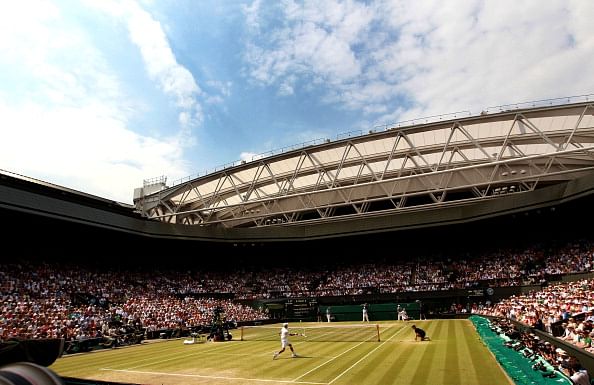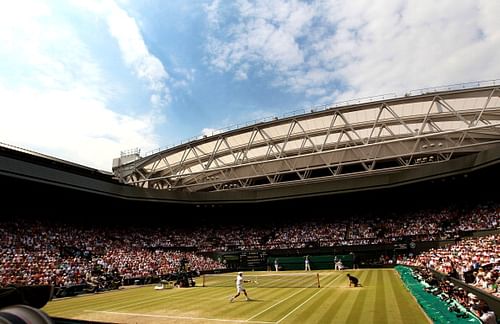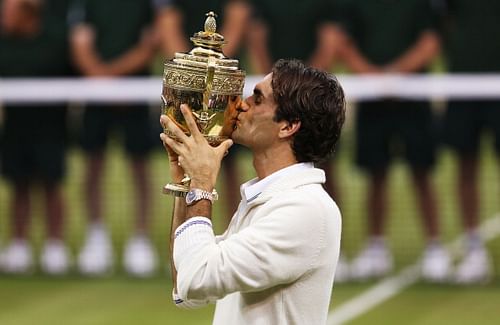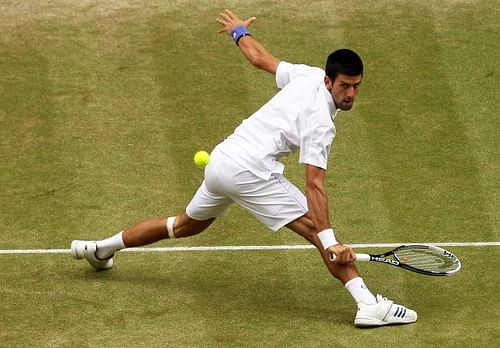
Player power forces Wimbledon to join the money choir

The All England Lawn Tennis Club announced a massive 40% hike in prize money, leading to an increase of $10 million to take the size of the pot to an astounding $34.4 million. At a time of widespread economic turbulence, especially in Europe, this may seem out of sync with the harsh realities facing society, but it is also an indicator that the tournament is finally willing to bend its knee under the weight of a growing chorus from the players. The ATP has long sought to drive a larger chunk of the revenues towards the players’ purse, with the argument that they are the ones filling up the seats and causing a boom in television. Finally, Wimbledon has relented and the hike is best explained by the amount a first round loser will take home this year – $35,890 – the amount is more than what Bjorn Borg won for taking the title in 1980. The winners will bank a cool $2.4 million this year.
There is an unmistakable sense that money has become deep rooted as sport evolves from an act of pleasure into one of profession. But it is clear that over the past two decades there has been an irreversible shift that has lead to the marriage between sport and commerce. Irrespective of the rumblings, this is one pairing that can never be separated. Television is helping strengthen this bond, as there is growing band of aspirational viewers who cannot get enough of sporting activity despite 24×7 programming.
At one end of the argument is the fact that players deserve a fair share of the growing revenues from gate proceeds, marketing and television rights fueled by a growing demand for sport across geographies. The other end of the argument is that fatter paychecks are encouraging perennial underachievers to live on the fringes, or even worse, enter tournaments without being fully fit only to collect the loser’s check and enjoy the hospitality. However, as with any problem there is no straightforward solution.
There have been prize money increases across the board this year with the purses bulging both at Grand Slam and Masters series events. The Australian Open offered a 15% raise which took the pot up to $31 million, the French Open has announced a 16% hike parting with $28.7 million and the US Open has agreed a hefty 31% increase to offer $33.6 million. But Wimbledon has shocked everyone with a massive raise that had eyebrows lifted and jaws dropped. In all, the Grand Slams will award over $127 million to the players this year, and further commitments have been made to progressively improve the payout. Most notable among these is a commitment by the US Open to offer a $50 million purse by 2017.

The increases have come after vociferous demands by the collective unit of players represented by the council of players and the executive leaders of the ATP, who have pressed the ITF and the tournaments to recognise the contribution of players towards the growth of revenues at these marquee events. While the increases are still not near the 25% share being sought by the players, the shift in the attitude has been a huge positive for the players who have shown an increasing willingness to gang up if their views weren’t taken on board.
“The latest prize-money increases announced by Wimbledon complete a successful set of discussions for the ATP with all four Grand Slams regarding player compensation,” said Brad Drewett, ATP executive chairman and president. “I’d like to thank Philip Brook (Chairman) and Richard Lewis (CEO) from the All England Club for their positive and constructive attitude toward prize money discussion with the ATP over the past 15 months.”
Wimbledon has also unveiled plans to add another retractable roof on court 1 following on the success of the roof over centre court, which came into being in 2009. The second roof is expected to be set up by 2019. With the Australian Open also having a roof to ensure uninterrupted television coverage, it is now only Roland Garros and Flushing Meadows that are lagging behind on that front. In fact, the US Open has finished on a Monday in each of the past five years. In France, there will once again be heated debate between proponents of relocation versus those in favour of renovation in the build-up to this year’s event.
Irrespective of which way the argument swings there is unprecedented concurrence among the organisers about the need to progressively innovate and change to continue thriving in a fast changing market. Meanwhile, despite the measures being taken to ensure a fair distribution of money there are growing disparities between the elite and the rest. For instance, just the top three players in the money list this year – Novak Djokovic, Andy Murray and Rafael Nadal, have collected $7.9 million, which is over $800,000 more than the combined earnings of players ranked 51 through 100 on the list for the period between 1st January and 22nd April this year. The astonishing fact is that the top ten have averaged nearly $1.4 million per player, while the next 90 average less than a quarter of that at $0.22 million per player.

It is this disparity that has turned Sergiy Stakhovsky into a champion for the under-nourished bunch of players. The Ukrainian, who is currently 100th on the list with $101,575 in earnings, has been the most outspoken supporter of distributing a larger share of the purse through the early rounds instead of concentrating the prize money in favour of the finalists. And it is not just at the bottom of the chart that the disparity makes a glaring appearance – even those who are among the top 30 earners have difficulty matching up with the men at the top. Players ranked 21 through 30 have collectively earned almost $600,000 less than the earnings of Djokovic alone.
In a capitalist world that rewards success and ignores the also ran, the challenge facing sport is the need to establish systems and mechanisms to ensure that the working bees of the tour also have a fair chance to train and compete against the top players; without that, we face the danger of it becoming impossible to hire the professional help needed to bridge the yawning gap between the creamy layer and those picking the crumbs. In reality, the disparity is making it almost impossible for the under-privileged lot to support their careers with their earnings without generous assistance from their respective tennis bodies. In essence, that may be next big problem facing the administrators of this popular sport – to ensure that the tournaments remain interesting and relevant for an entire week instead of just the weekend.